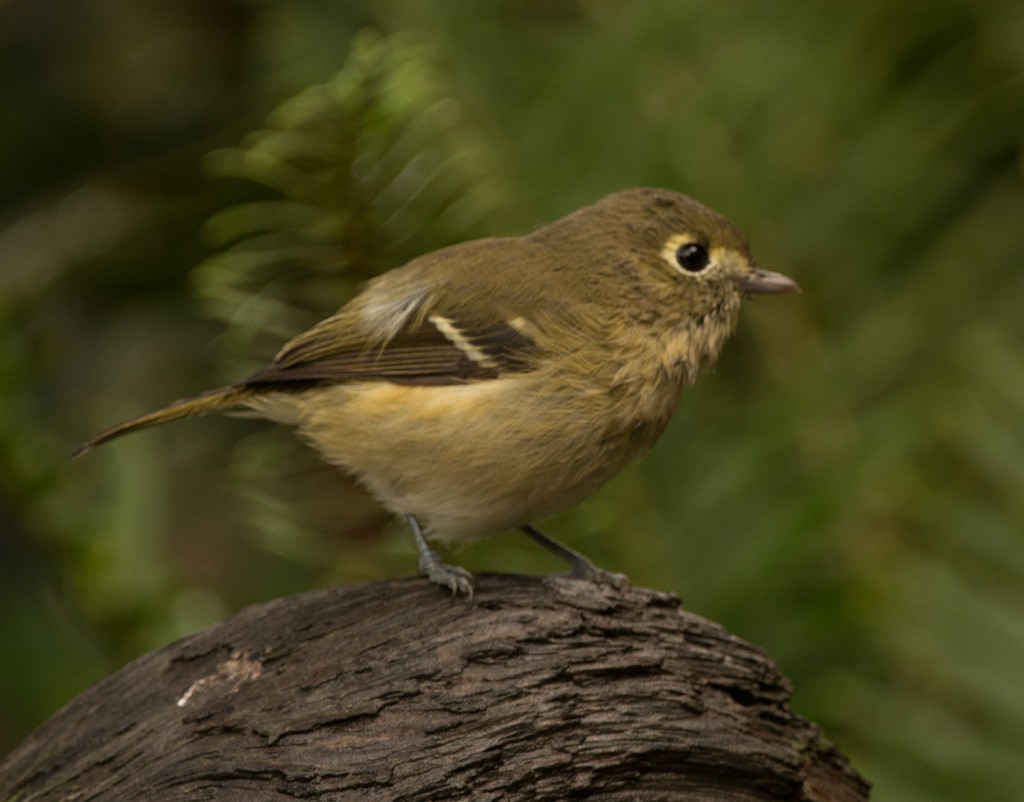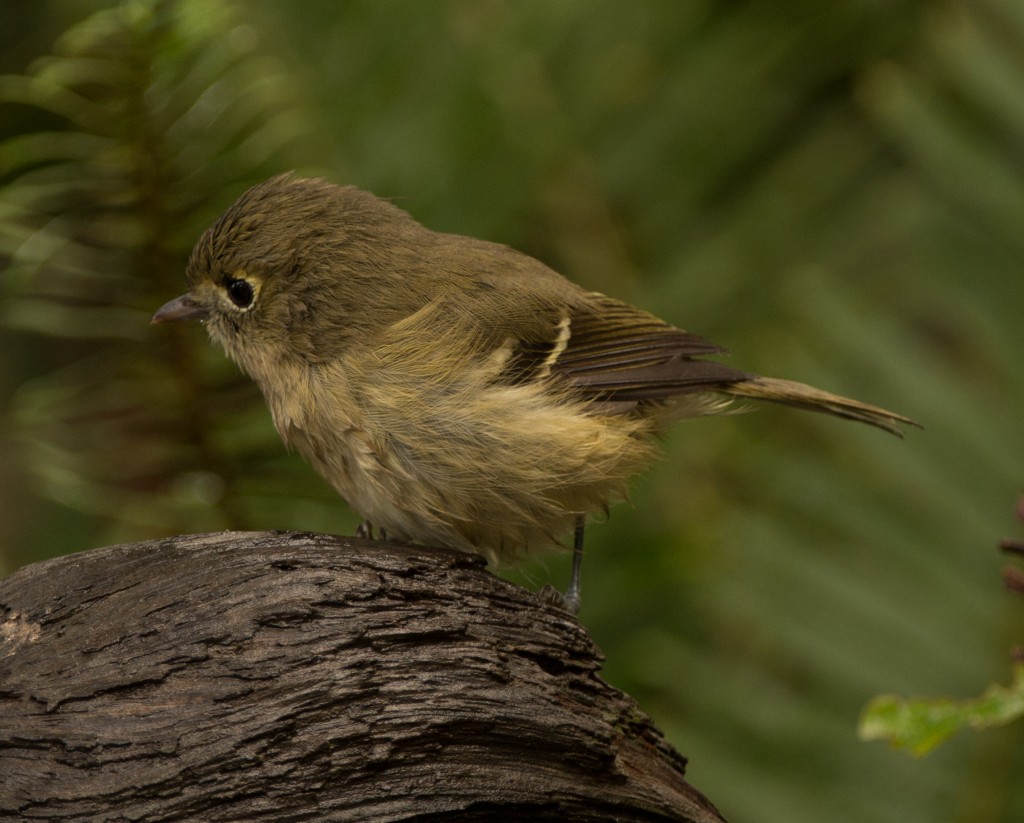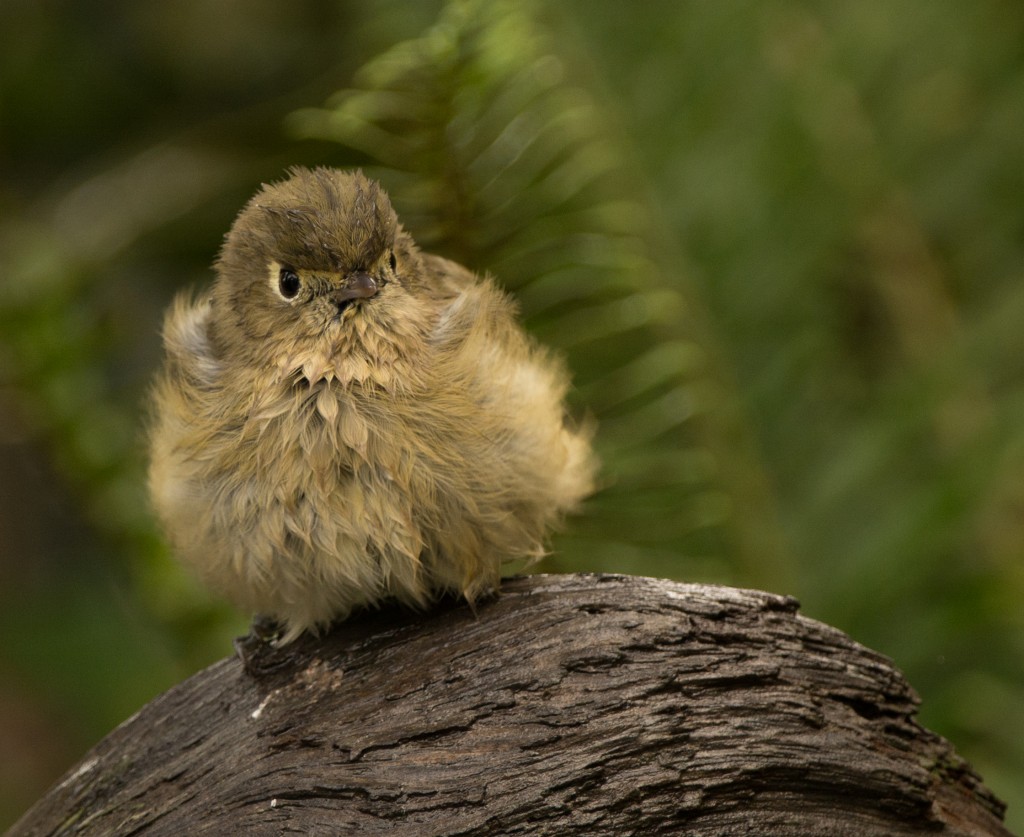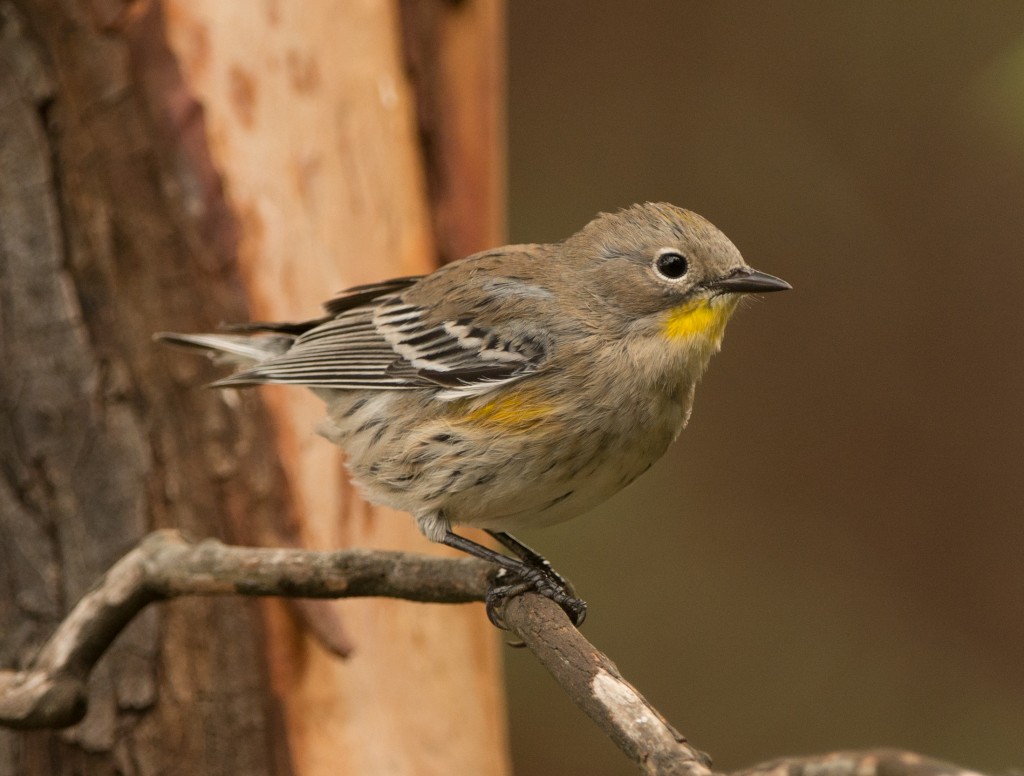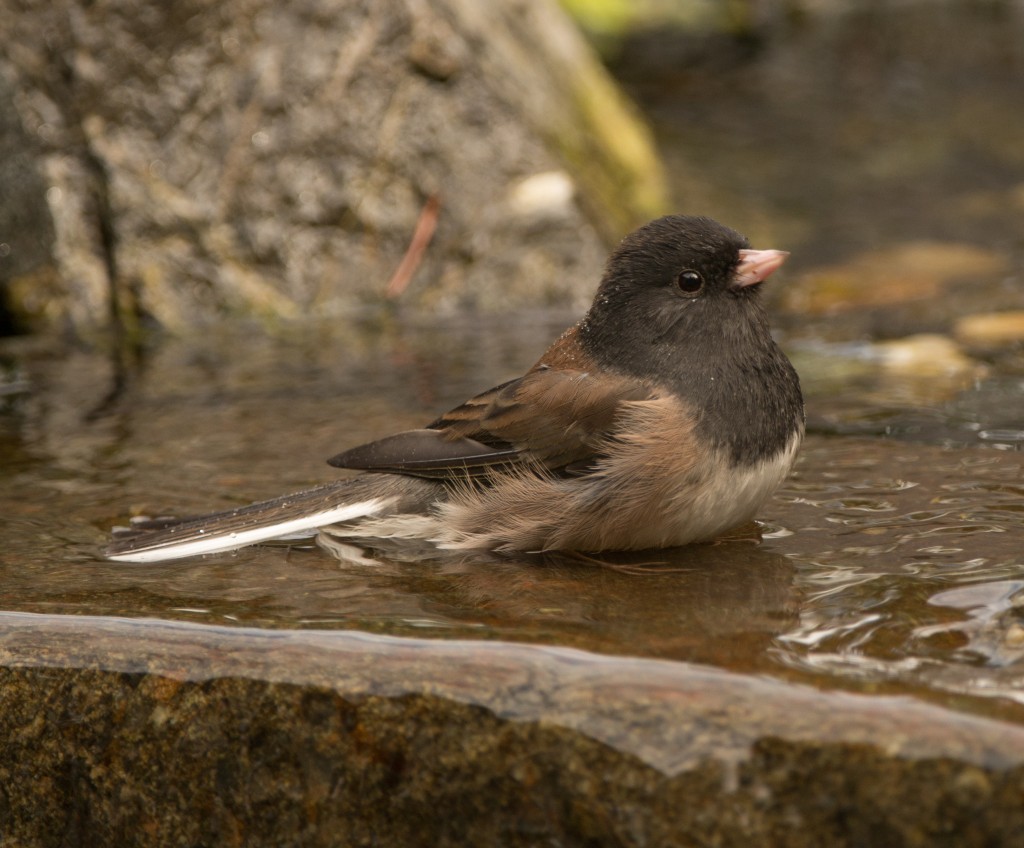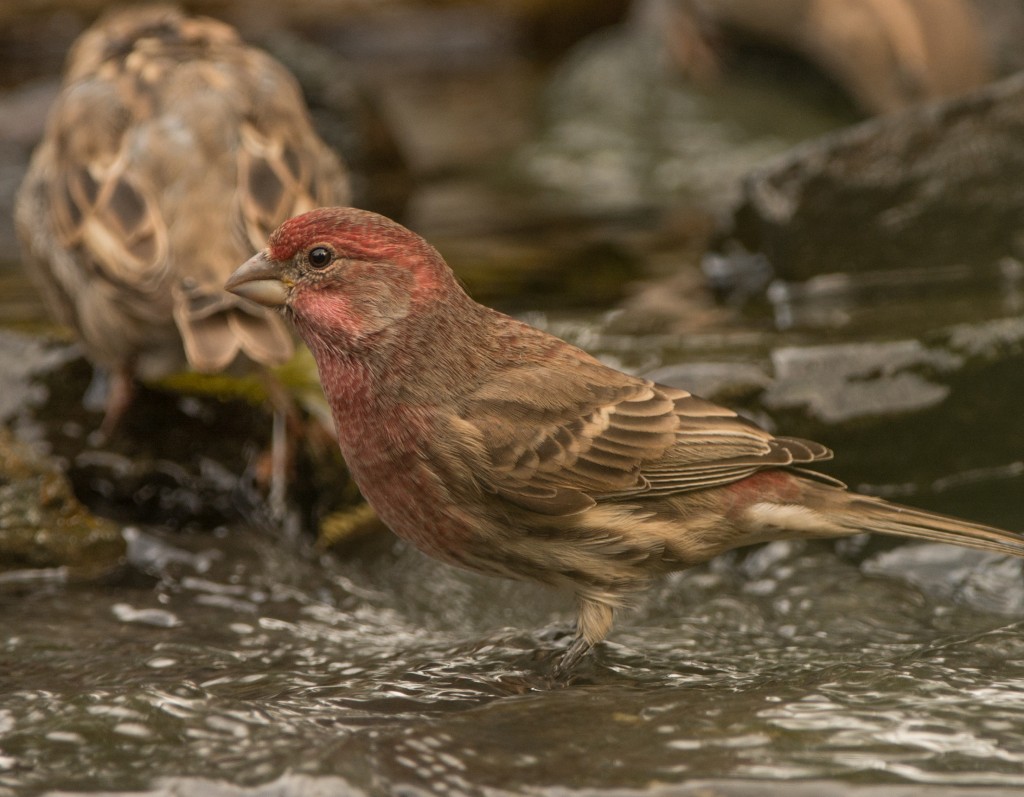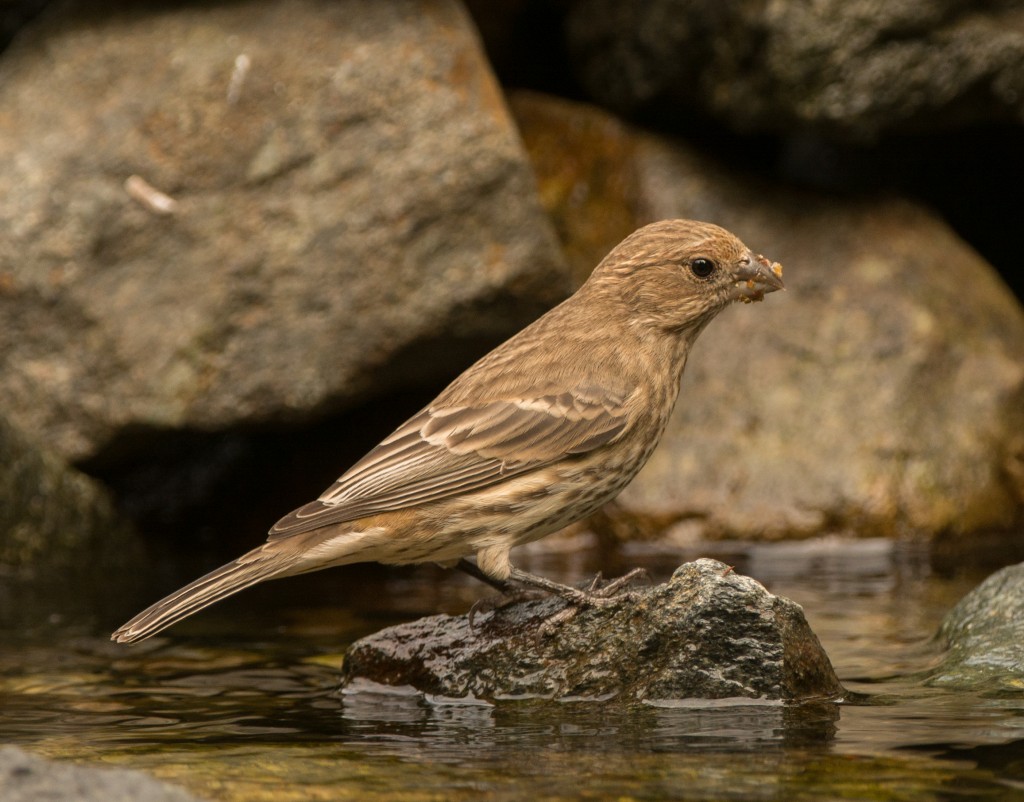Last things first…
The birding has been very good lately… in fact, it only slacked off for a week or so in early September. But things have been so good lately that on September 30 (2014) I logged a new yard bird… a Hutton’s vireo! At the time I was photographing the bird I was under the impression that I was photographing our first fall Ruby-crowned kinglet. But in processing the photos I realized that the bird wasn’t a kinglet and in all probability was a Hutton’s vireo… the two birds closely resemble each other. One of my “better birder” friends confirmed my identification.
In vireo fashion, which I’ve only come to realize this year, this vireo flew to the water and bathed “on the fly”. I’ve observed this with the White-eyed vireo in Texas in May and the Warbling vireo in our yard earlier this summer.
I was fortunate in being able to get a couple of decent photos before the bird began hitting the water… once it was wet, it became much more difficult to identify.
We continue to have many Yellow-rumped warblers visiting the yard every day… more than I’ve ever seen in the yard previously. Most appear to be of the Audubon’s race, but many are so pale as to defy my species identification. (Last spring I was fortunate to be able to get both races in the same photograph!) I believe that the bird pictured below is a male of the Audubon’s race.
We’re up to about 3-4 Dark-eyed juncos of the Oregon race in the yard. In most past years the birds have left for higher elevations for their breeding season, but this year we had a pair that remained around the property. Unfortunately the product of their breeding season was a Brown-headed cowbird, which I think I documented in a previous blog post. By winter this will be our most numerous yard bird unless the Pine siskins, which I haven’t seen in well over a year, return in previous numbers. In this photo you can clearly see the outer white tail feathers, a real clue for identifying a junco in flight.
And the final photos are of House finches, usually regular visitors although they did disappear from the yard for several weeks during the breeding season.

